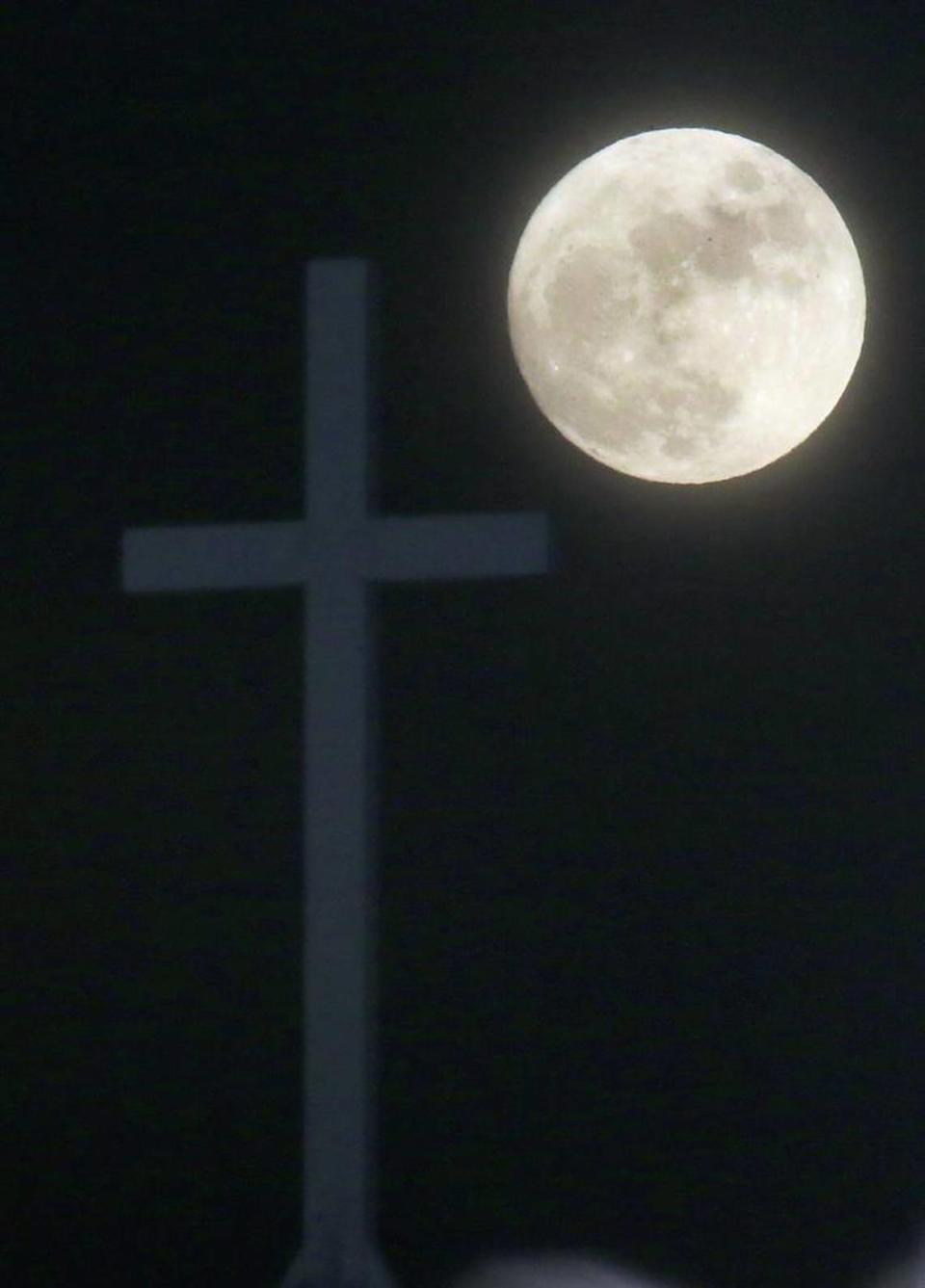A cold moon is about to light up the SC sky, Farmer’s Almanac says. Here’s when & what it means
South Carolina residents will soon have the opportunity to witness the last full moon of 2023.
The full cold moon will reach its peak illumination on Dec. 26 at 7:33 p.m. but will rise around sunset for several nights in a row, including the 25th, 26th, and 27th, according to The Old Farmers Almanac.

This means that those who are hoping to catch a glimpse on Christmas Day will have a chance to do so.
The full cold moon is the first full moon to occur after the winter solstice and will take the highest, longest path across the night sky.
If you happen to look up for it during the December full moon’s occurrence, it will appear nearly at the top of the sky. This is because it stays above the horizon longer than any other moon.
As for the moon itself, the cold moon isn’t the only name for which it is known.
Another well-known name is the “long night moon.” This is because this full moon rises during one of the “longest” nights of the year, due to the closeness toward the December winter solstice. The name also fits because this full moon shines above the horizon for a longer period of time than most other full moons, The Old Farmer’s Almanac states.
How this impacts coastal tides along SC
Those living in coastal regions of South Carolina can expect to experience spring tides as a result of the month’s full moon.
A spring tide is “a tide just after a new or full moon, when there is the greatest difference between high and low water,” as detailed by the Oxford Dictionary.
Tide height comparisons for the month of December in reference to the moon’s phase can be found at Tidetime.org for three coastal South Carolina locations at the following hyperlinks:
2023 full moon schedule
Here is a list of all the full moons that have occurred this year and their peak illumination time in the Eastern Time Zone, according to NOAA.
Jan. 6: This full moon happened at 6:08 p.m. It’s called the wolf moon.
Feb. 5: This full moon happened at 1:29 p.m. It’s called the snow moon.
March 7: This full moon happened at 7:40 a.m. It’s called the worm moon.
April 6: This full moon happened at 12:34 a.m. It’s called the pink moon.
May 5: This full moon happened at 1:34 p.m. It’s called the flower moon.
June 3: This full moon happened at 11:42 p.m. It’s called the strawberry moon.
July 3: This full moon happened at 7:39 a.m. It’s called the buck moon.
Aug. 1: This full moon happened at 2:32 p.m. It’s called the sturgeon moon.
Aug. 30: This full moon happened at 9:36 p.m. It’s called the blue moon.
Sept. 29: This moon happened at 5:57 a.m. It’s called the harvest moon.
Oct. 28: This moon happened at 4:24 p.m. It’s called the hunter’s moon.
Nov. 27: This full moon happened at 4:16 a.m. It’s called the beaver moon.
Dec. 26: This full moon will occur at 7:33 p.m. It’s called the cold moon.

